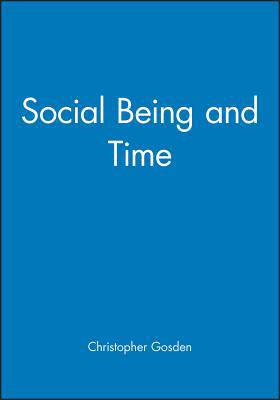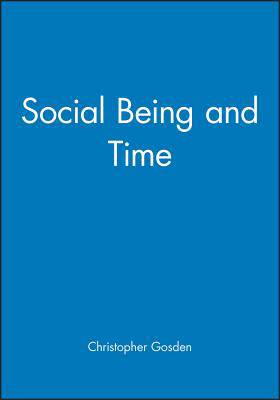
Door een staking bij bpost kan je online bestelling op dit moment iets langer onderweg zijn dan voorzien. Dringend iets nodig? Onze winkels ontvangen jou met open armen!
- Afhalen na 1 uur in een winkel met voorraad
- Gratis thuislevering in België vanaf € 30
- Ruim aanbod met 7 miljoen producten
Door een staking bij bpost kan je online bestelling op dit moment iets langer onderweg zijn dan voorzien. Dringend iets nodig? Onze winkels ontvangen jou met open armen!
- Afhalen na 1 uur in een winkel met voorraad
- Gratis thuislevering in België vanaf € 30
- Ruim aanbod met 7 miljoen producten
Zoeken
€ 88,45
+ 176 punten
Omschrijving
The nature of time is one of the continuing mysteries of human life. This is of particular relevance to archaeology with its unique focus on the social development of the human species from its origins to the present.
Christopher Gosden probes the way in which the rhythms of social life derive from our involvement in the world, particularly as those rhythms unfold over many thousands of years. The author argues that time is created through the social use of material things such as landscapes, settlements and monuments, and illustrates this with case studies drawn from Europe and the Pacific.
The book provides a theory of social change and social being as the basis for understanding social formations over long periods of time. In developing this theory the author surveys ideas on human action and time as these have evolved over the last two centuries. Although the theory is designed and presented here to be of practical use in interpreting archaeological data - exemplified here in case studies - the broad scope of the book will ensure its interest to all concerned with the interactions between people and the material world.
Christopher Gosden probes the way in which the rhythms of social life derive from our involvement in the world, particularly as those rhythms unfold over many thousands of years. The author argues that time is created through the social use of material things such as landscapes, settlements and monuments, and illustrates this with case studies drawn from Europe and the Pacific.
The book provides a theory of social change and social being as the basis for understanding social formations over long periods of time. In developing this theory the author surveys ideas on human action and time as these have evolved over the last two centuries. Although the theory is designed and presented here to be of practical use in interpreting archaeological data - exemplified here in case studies - the broad scope of the book will ensure its interest to all concerned with the interactions between people and the material world.
Specificaties
Betrokkenen
- Auteur(s):
- Uitgeverij:
Inhoud
- Aantal bladzijden:
- 232
- Taal:
- Engels
- Reeks:
Eigenschappen
- Productcode (EAN):
- 9780631190233
- Verschijningsdatum:
- 31/01/1994
- Uitvoering:
- Paperback
- Formaat:
- Trade paperback (VS)
- Afmetingen:
- 155 mm x 234 mm
- Gewicht:
- 353 g

Alleen bij Standaard Boekhandel
+ 176 punten op je klantenkaart van Standaard Boekhandel
Beoordelingen
We publiceren alleen reviews die voldoen aan de voorwaarden voor reviews. Bekijk onze voorwaarden voor reviews.











